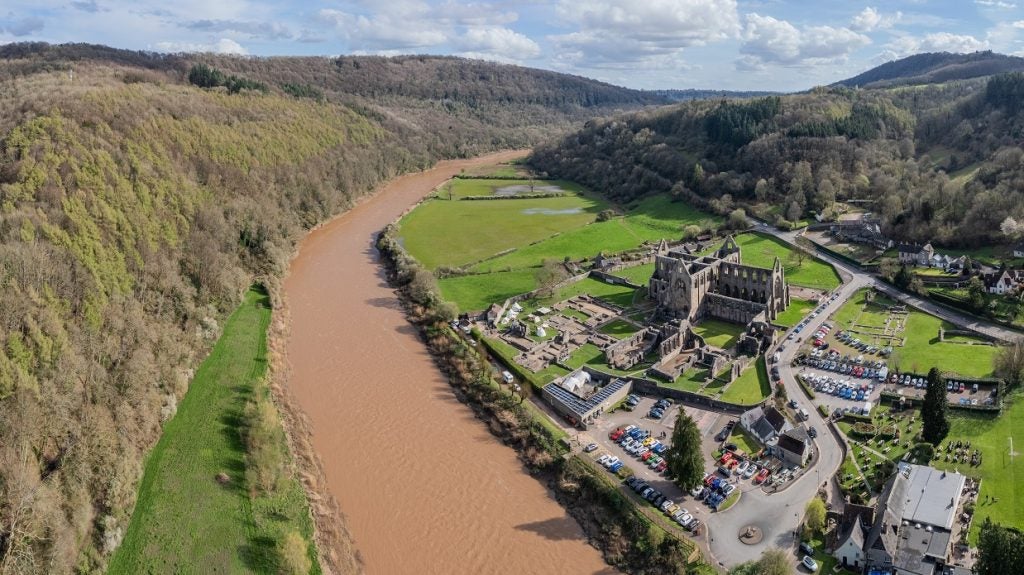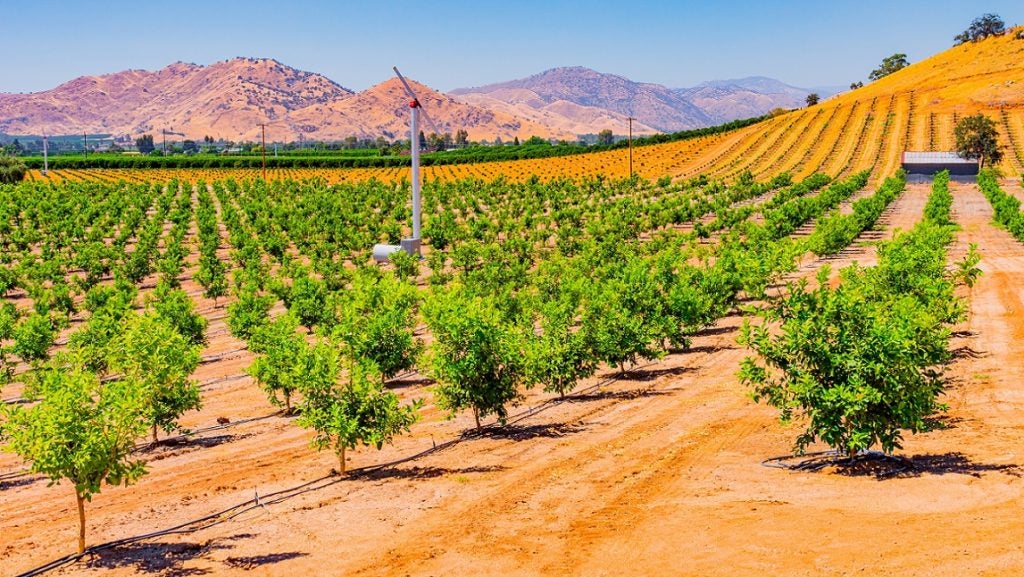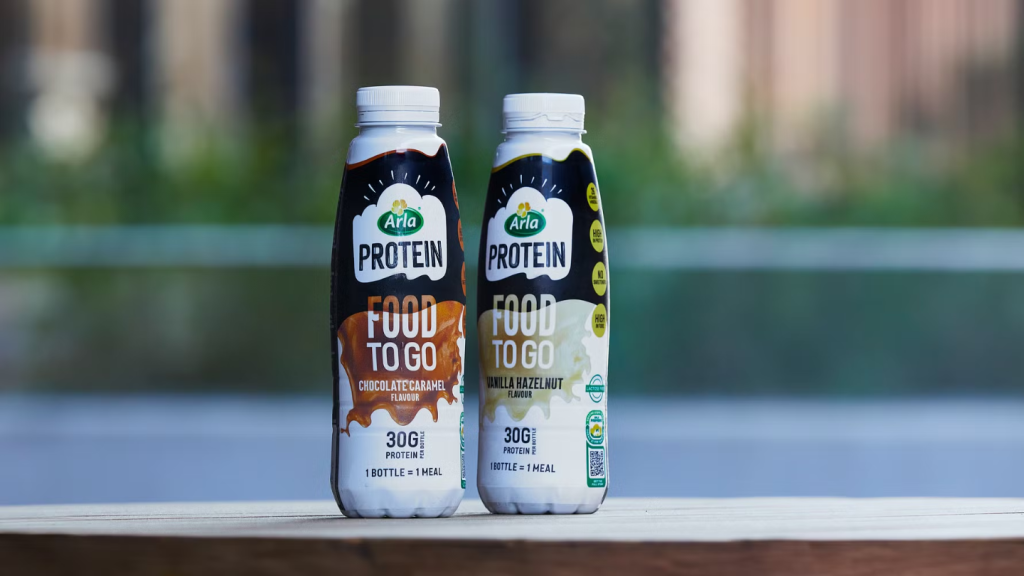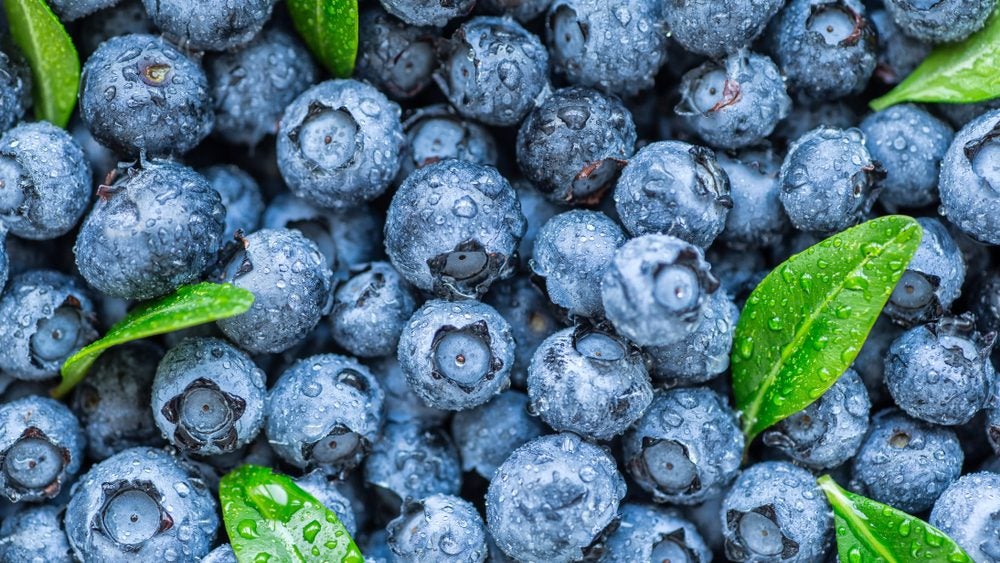Ings, an upland pasture farm, sits about 20km north of the English city of Leeds in an area of outstanding natural beauty. It is August but the clouds are low-lying and it is drizzling with rain. Sat in the car looking out at the wet, Just Food is reading about water – and the citrus producers in the Central Valley of California who might need water pumped from the Great Lakes if they’re going to keep growing.
“The United States has no plan for the disruptions that will befall our food systems as critical water supplies dwindle,” wrote Jay Famiglietti in an opinion piece for the New York Times earlier this month. The price of some foods will “skyrocket” as groundwater disappears “fast”, warned Famiglietti, the global futures professor at Arizona State University and the director of science for the Arizona Water Innovation Initiative.
This is already happening in some parts of the world. As the climate changes due to global heating, farmers are struggling with either too much water or too little of it – or they’re under the cosh for contaminating it.
In the UK clusters of intensive poultry plants have been linked to the pollution of waterways. Across the English Channel in France, wheat producers are facing their worst harvest in 40 years following a wet winter and summer. Tonnages from the EU’s top producer and exporter of soft wheat could be down 25% compared to the average of the last five harvests, according to an August update by Agreste, the agency which provides statistics for the country’s agriculture ministry. Similar problems hit the sector in 2016.
Further afield, in China, produce prices have risen sharply over the past two months, affected by extreme weather from deadly floods to scorching heat that has devastated millions of acres of farmland, which is now hitting consumers in their pockets, reports Reuters. The tide of bad news relating to weather, and water, is rising, so presumably the food sector is reacting?
“From what I can see the world’s big agri-food businesses make a lot of noise about water risk and assessments but appear to be as, if not more, exposed than they ever were,” explains Famiglietti in an email to Just Food. “I think the lack of a plan stems from the lack of appreciation of just how much water it takes to grow, package, and transport food, as well as the fact that the most critical input, water, is disappearing from some of the nation’s top food producing regions. That lack of understanding spans virtually all sectors, including agriculture and government.”
Statistics don’t appear to have helped push corporates to act. Ceres, a US non-profit, has been pressing food manufacturers on water risks for a number of years. In 2017, as part of its ‘Feeding ourselves thirsty’ research, Ceres found many companies to be ”worryingly off the pace” in responding to water risks. Come the fourth and final report in 2021, fewer than half the companies analysed performed robust water risk assessments (inclusive of water quality) that focused on their agricultural supply chains. “Highly-stressed areas in these supply chains are not getting the attention they need from companies,” the group warned, while “only a handful of companies have implemented water use reduction targets or provided support for farmers in high-stress water basins”.
Drip dry
Three years on and there is a feeling that the pace of change, of adaptation and mitigation to the water crisis which weaves through the nature and climate crises, is nowhere near fast enough. The Consumer Goods Forum’s latest annual report mentions water just once (in relation to food waste). And, in all the hype around regenerative agriculture it seems to be the forgotten element, suggests Vincent Walsh, the consultant at RegenFarmCo running the “circular and regenerative” hub at Ings Farm.
Regenerative approaches should bring benefits in terms of water. It is “both an input and a contributor to regenerative agriculture, as well as being an outcome of or beneficiary of regenerative agriculture”, wrote Bruce Lankford, from the University of East Anglia in the UK, and Stuart Orr, freshwater lead at WWF, based in Switzerland, in a paper for Frontiers in Sustainable Food Systems in 2022. Think of hedges and trees that can act as flood defence systems, for example, or healthier soils that can slow water’s path and improve crops’ resilience to drought. Knock-on impacts can be less need for chemical inputs, which in turn reduces problems from pollution.
However, there are “pitfalls”, the experts warned, that will occur if policies are drawn up by referring to “idealised narratives rather than being designed to fit specific contexts, cases and factors”, and these could undermine the “water promises” that new approaches to agriculture potentially offer. In other words, let’s not try swimming until we have had lessons.
Nevertheless, the need to do, or say, something is strong. This is the case with regenerative agriculture ambitions generally, as companies strive to reassure investors that things are under control. Increasingly investors will want to know for sure, though.
“Carbon emissions are the primary cause of global warming and their reduction has dominated financial institutions’ response to climate change. But the impacts of a warmer planet are felt through changes in the water cycle,” CDP’s briefing for directors of financial institutions reads. There are “physical and transition risks”, especially for the food sector, but “the mismanagement of water exposes financial institutions to litigation risk, reputational damage and loss of social licence”.
Christina Lampert, director of growth and innovation at US food rating and environmental accounting firm HowGood says improved water quality is part of the conversation given the “indirect benefit[s] of regenerative agriculture. For example, companies are attributing cover cropping to the prevention of nitrogen runoff into water streams,” she explains.
Too much nitrogen and phosphorus in any water runoff can lead to severe water pollution. This is why, for example, that, in the UK, Yorkshire Water has a vested interest in supporting what is happening at Ings Farm. The 37 hectares of land is tenanted rent-free, with the project also supported financially by foodservice company Levy (part of Compass Group) and mycoprotein manufacturer Quorn Foods. “What happens on the land ends up in the water,” explains Walsh, who is planting thousands of trees to produce fruit and many thousands more to help restore and protect land that has been used solely for grazing sheep. Patience is a word that comes up time and again in our walk through the fields. “The sheep will be part of the system … eventually [but] it will take three years to understand the landscape here,” he adds.
Dirty disses
That there is a problem with water pollution from food production is no secret but scrutiny has intensified in recent months. Campaign groups Sustain and Friends of the Earth recently produced data revealing that just ten large agribusinesses operating in the UK (Arla Foods, Avara Foods, Banham, Bernard Matthews, Cranswick, Hook2Sisters, Karro, Moy Park, Noble Foods and Pilgrim’s Pride) have more than 144 million animals in production at any one time, which create 55,262 tonnes of excrement every day. None of the ten firms were found to have policies to prevent pollution leeching into water-bodies. The analysis shows the food firms’ operational areas “clustered” around polluted river catchments, including the Wye. The companies have poo-poohed the research.

It isn’t the first warning though, and it certainly won’t be the last. Fairr, the global network of investors worth a combined $70trn, estimates global livestock manure amounts to some 3.12 billion tonnes (around five times that of human waste). What happens to this animal waste presents a “major threat” to ecosystems, the network warned in its 2022 report, ‘Creating a stink’.
Indeed, it is not just plants that are impacted by water quality and stress. In 2022, the beef industry in northern Mexico lost 30% of cattle herds due to an unprecedented drought. In Argentina last year, droughts impacted soy, corn and beef farmers to the tune of billions of dollars. “The water footprint of livestock production is driven by crop farming for animal feed,” explained Fairr in a 2023 blog. “It is estimated that 98% of all water used to produce meat is from animal feed production, yet 72% of livestock companies […] do not disclose how they address water scarcity risks in animal feed. Additionally, very few companies undertake location-specific water risk assessments and so are unable to understand or navigate the exposure to water-related risks in their operations.”
The Coller Fairr Protein Index 2022/23 shows that just three companies, Bell Food Group, Marfrig and Sanderson Farms, disclose the locations of facilities in medium- or high-water-stressed areas. Marfrig is the only company in the index that has disclosed this information since 2020. Dairy giant Fonterra was credited for its approach to managing animal waste. The most recent index, 2023/24, published in November, showed some improvements: more of the assessed companies (30 v 25 the previous year) reported completing or being in the process of conducting a risk assessment to identify processing facilities that operate in locations with medium- or high-water-stress. However, all the companies that have not undertaken a scarcity-related risk assessment operate in countries with regions of high or extremely high water stress.
When you look at CSOs, not many are deeply and actively working on water the way they should be.
Charlotte Bande, Quantis
In the ‘bigger picture’ conversations with food brands, water scarcity seems to be ahead of quality in terms of corporate priorities, say experts. Still, they are not going far enough. Fairr has long warned that the approaches to water risk assessments are lacklustre and, by and large, focused on processing facilities. Charlotte Bande, global food and beverage sector lead at Quantis, a consultancy, has witnessed this, too. Many companies continue to treat water in a very operational manner, Bande suggests, which is a bit like looking at only Scope 1 and 2 carbon emissions to reach net-zero.
“When you look at CSOs [chief sustainability officers], not many are deeply and actively working on water the way they should be – especially at the pace that the risk represents, and especially when thinking about agriculture,” says Bande. However, “they are working on regenerative agriculture, which […] has several water benefits”.
Tomato gains squashed
Last month, Cargill published a blog on the water risks it faces as one of the world’s largest commodity companies – and what it is doing about it. Global water lead Truke Smoor talks about healthy soils acting “like sponges, soaking up and storing water. This makes farms more resistant to drought and reduces the need for extra watering, which conserves water and improves crop yields.” There are also details about Cargill’s water targets, including those relating to pollutants, and current in-field research.
Whether food companies truly understand the complexities of all this is moot. Grain, an international non-profit focused on supporting small farmers, recently highlighted the case of a showcase tomato farm in Extremadura in Spain, which supplies Unilever. The owner of Knorr has been working with tomato supplier Agraz in using sensors and soil probes to apply water more precisely to the crops and published some notable results at the end of last year.
But is it truly regenerative? “We need to think seriously about reducing the area under irrigation and to opt for crops with lower water requirements,” Eugenio Romero, an agricultural researcher in Extremadura explained in a blog on Grain’s website. Romero warned the region can no longer afford to export water via crops like tomatoes, however precise the irrigation system is. “The math doesn’t add up. There is not enough water for everything. The crop map of Extremadura is no longer sustainable,” he said.
That blog was titled Regenerative agriculture was a good idea, until corporations got hold of it. Others are similarly sceptical of the water benefits being sprayed about on corporate websites as they shift towards ‘regenerative’ systems in their supply chains. “The word ‘regenerative’ is being bastardised,” says Walsh, citing his bemusement over companies claiming that mono-crops are somehow regeneratively farmed.
Terms such as ‘net positive’ and ‘net zero’ have started to seep into corporate vocabulary around water, which also concerns the likes of Orr and Lankford. They argue the claims are often restricted to agro-processing facilities or bottling sites that typically account for 2-3% of total water use in agri-food. “[…] notions that regenerative agriculture water can be ‘net positive’ at a basin level are untested and unrealistic”, they wrote.
Perhaps it’s a case of marketing leading sustainability to water and forcing them to jump in unprepared. "Companies are figuring out how to measure water impact in a way that benefits their investors and their own long-term procurement strategy,” says Lampert at HowGood. “Because they recognise that water is only going to become more important within their sector, they are taking time to align on the methodology that makes the most sense for their sector, company and nature of their sourcing.”
Boss in boots
At Quantis, Bande cites the example of the Science-Based Targets Initiative (SBTi). Well-known for its work on greenhouse gas emissions and net-zero, the initiative also has a framework for freshwater science-based targets. The framework is so complex that it makes it difficult to make decisions, though. “You can’t just say you have reduced water by X% [like you can with carbon]; you have to factor in things like your ‘allowed share’ alongside other entities in areas of water stress,” Bande explains.
There also tends to be a greater challenge in measuring the holistic water impacts for ingredients that are ultra-processed and where traceability back to the farm-level crop can be near to impossible depending on how many tiers of suppliers are involved. Think of a Nestlé, for example, with thousands of crops from thousands of different water basins and it can be a mountain to climb. Bande feels that SBTi and the Taskforce on Nature-related Disclosures (TNFD) are helping to make water a priority but companies generally are “eager but struggling” with this issue.
A good start would be for CEOs to visit farms, which would bring perspective on the challenges their suppliers – and by default their company – are facing in relation to water. “You asked me ‘what are the benefits from regenerative agriculture in relation to water and are these high on the agenda?’ I think the answer will be very different if you ask a food company or if you ask a farmer,” Bande says.
Back on the farm in Yorkshire, Just Food stops at one of the swales being dug into the hillside. A swale is a way of holding water in the landscape, Walsh explains, but it’s not an isolated feature – it’s part of a hydrology project involving 56 features throughout the farm, including dozens of farms and various shrubs and crops and fencing. He adds: “The second the rainy season starts this swale will start to fill up and we’ll tinker with it and monitor it over the next 12 to 24 months to make sure it’s efficient for the farm.” To me, it seems like rainy season has started early.
















